Easy Way to Clear Rooms Underground in Egnimatic 2 Expert
Millions of years ago in Cappadocia, the ash spewed forth by local volcanoes hardened into a soft stone called tufa. In addition to forming the region's breathtaking landscapes, tufa deposits also extend far below the ground. And throughout the area's tumultuous history, inhabitants could simply dig their way out of trouble. What ultimately formed were incredibly vast cave complexes such as Derinkuyu and Kaymaklı Underground City.
Both situated south of the city of Nevşehir, the two underground cities can be easily visited by public transport on the same day. Many, however, will stop at Derinkuyu as part of the popular Green Tour (see below for more practical information).
But however you choose to visit, the experience of exploring these underground metropolises will linger in your memory for a long time. To this day, we're still not really sure just how old they really are, or how far they extend. But Derinkuyu and Kaymaklı were likely the largest among no less than hundreds in the region!
Derinkuyu Underground City
Without the signs pointing you there, one would never guess that such an elaborate underground city exists beneath this peaceful little town. And until 1963, even locals were none the wiser.
Derinkuyu translates to 'Deep Well,' and its entrance was discovered accidentally by a man remodeling his home. But what he discovered led to much more than just a well.
Many more entrances were later discovered, while a small ticket office has been constructed over the official one. After paying the entry fee (see more about tickets below), you'll immediately begin your descent into this unique subterranean world.
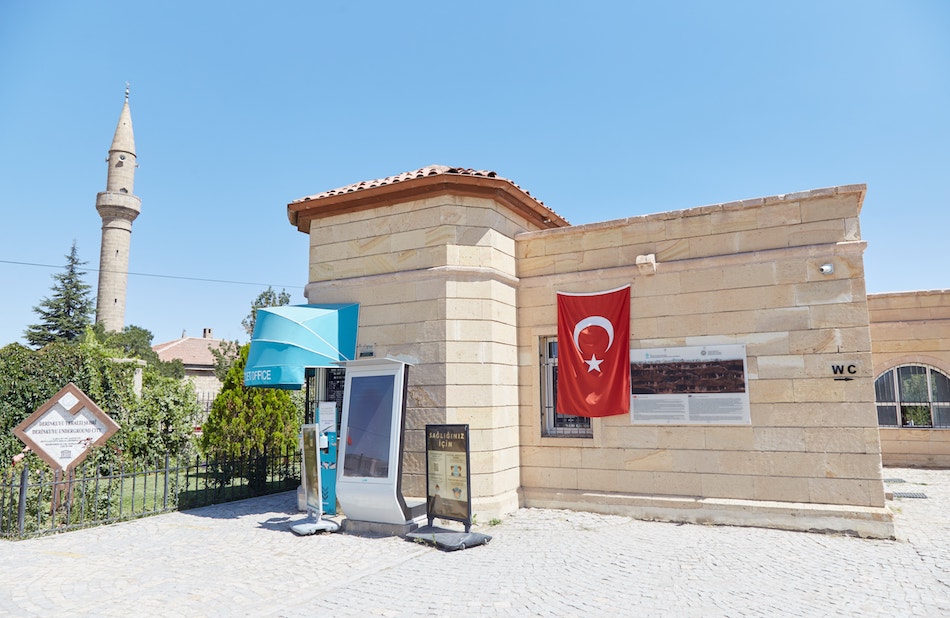

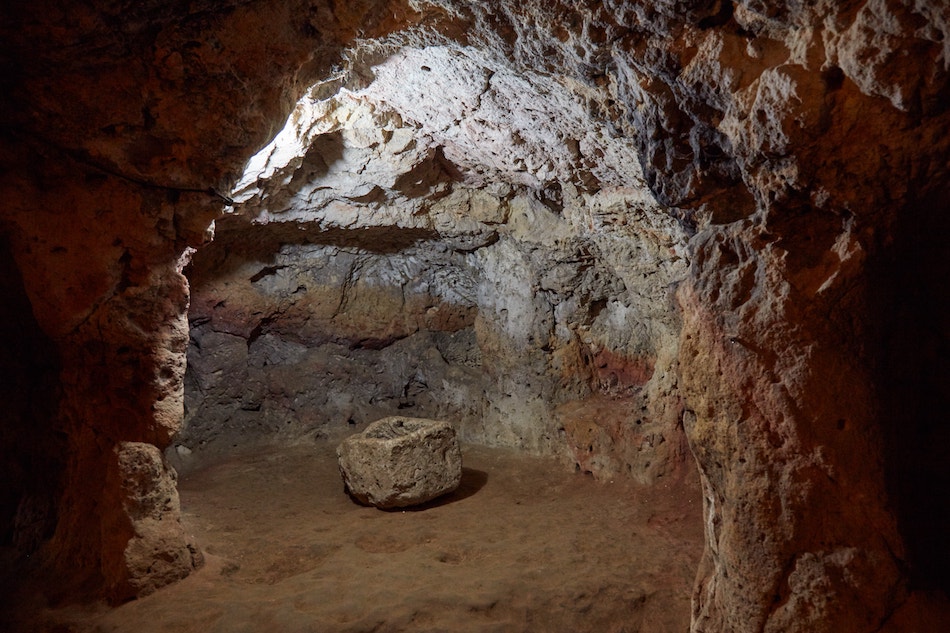
The upper levels of Derinkuyu were likely first built by the Hittites, a Bronze Age civilization that lasted from the 17th-12th centuries BC. While they controlled most of Anatolia and beyond, their capital of Hattusa was not too far away from Cappadocia.
The next major group to take over the region was the Phrygians, who inhabited Cappadocia in the 8th-7th centuries BC. The oldest written record of Cappadocia's underground cities, meanwhile, is in the Anabasis, a work by 5th-century Greek historian Xenophon.
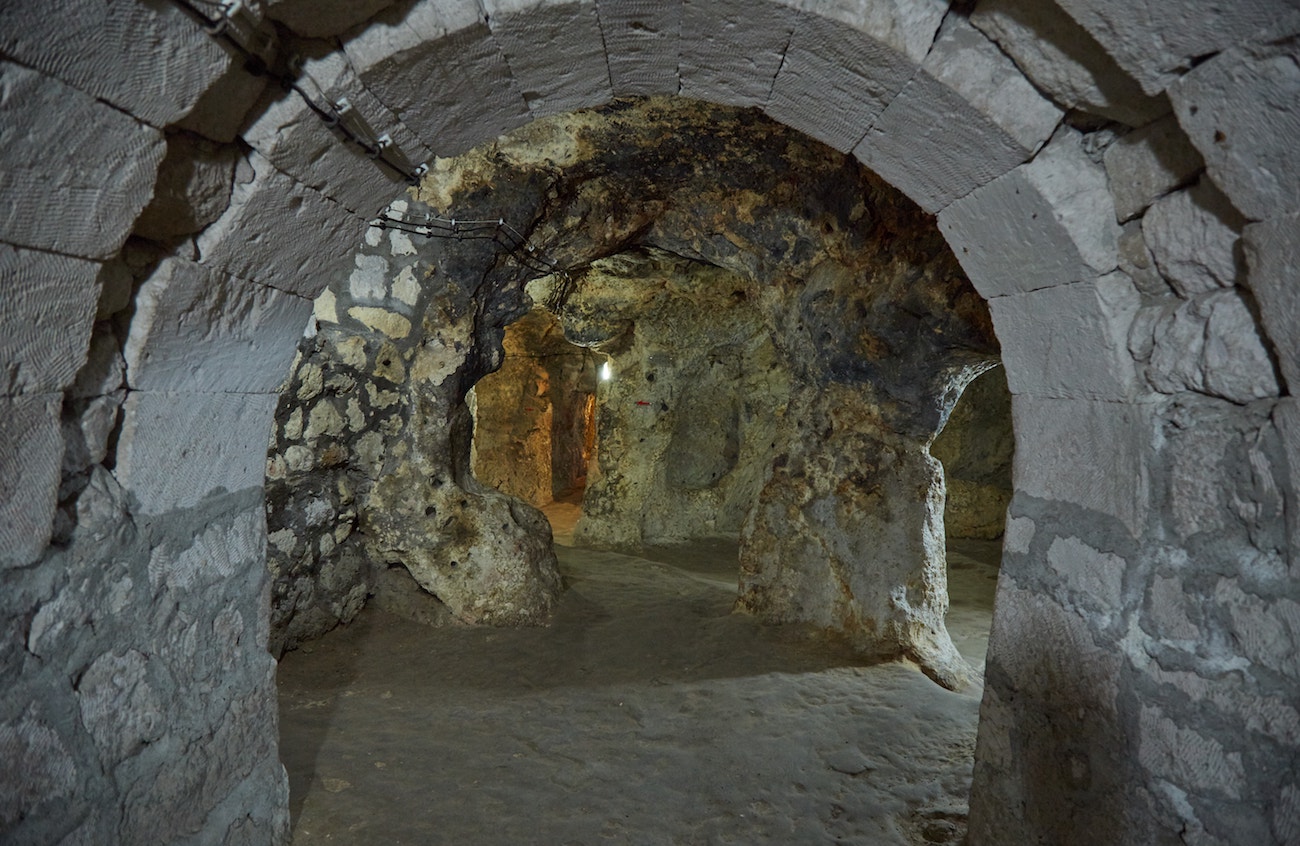
Later, the caves were inhabited by early Christian communities escaping persecution by the Romans. But even centuries later, when Christianity was the official religion of the Byzantine Empire, Derinkuyu was used to hide from repeated Muslim invasions.
The region's underground cities would then come in handy yet again to hide from the Mongols and Timurids in the 13th-14th centuries.
With such a long period of habitation, just about everything you'd expect from a regular city could be found here. Derinkuyu Underground City featured things like horse stables, wine cellars, churches, granaries and plenty of bedrooms.
After all, this place was likely home to as many as 20,000 people!
But exploring the complicated cave network today, the original purpose of most of these rooms is far from obvious. The modern signage definitely comes in handy, but much imagination is still required.
Conveniently, you'll find various arrows to help you navigate. To ease foot traffic, visitors descend via one path before returning up an entirely different one.
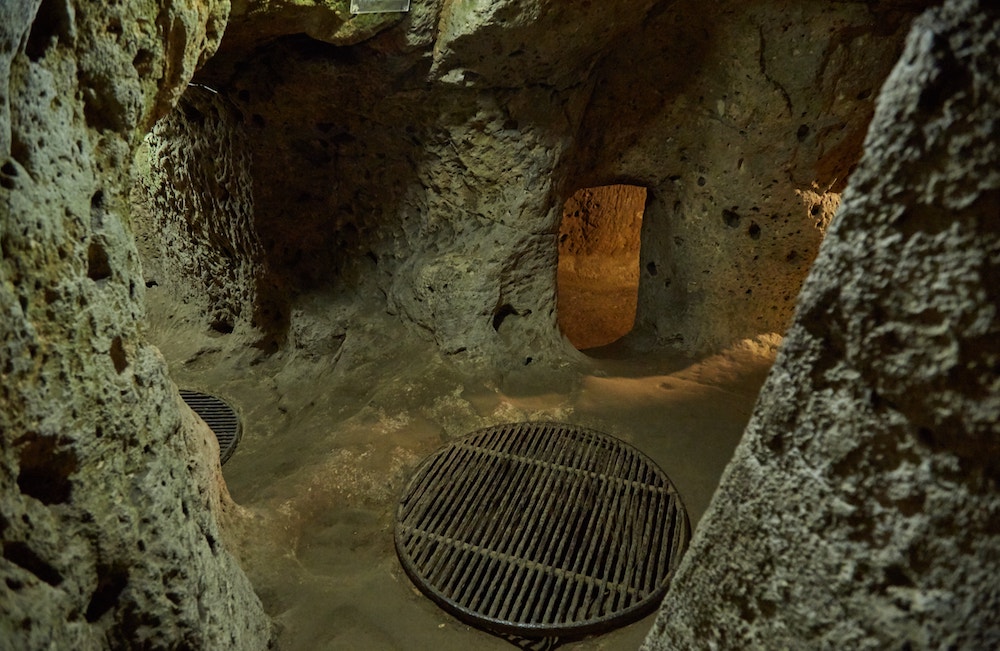
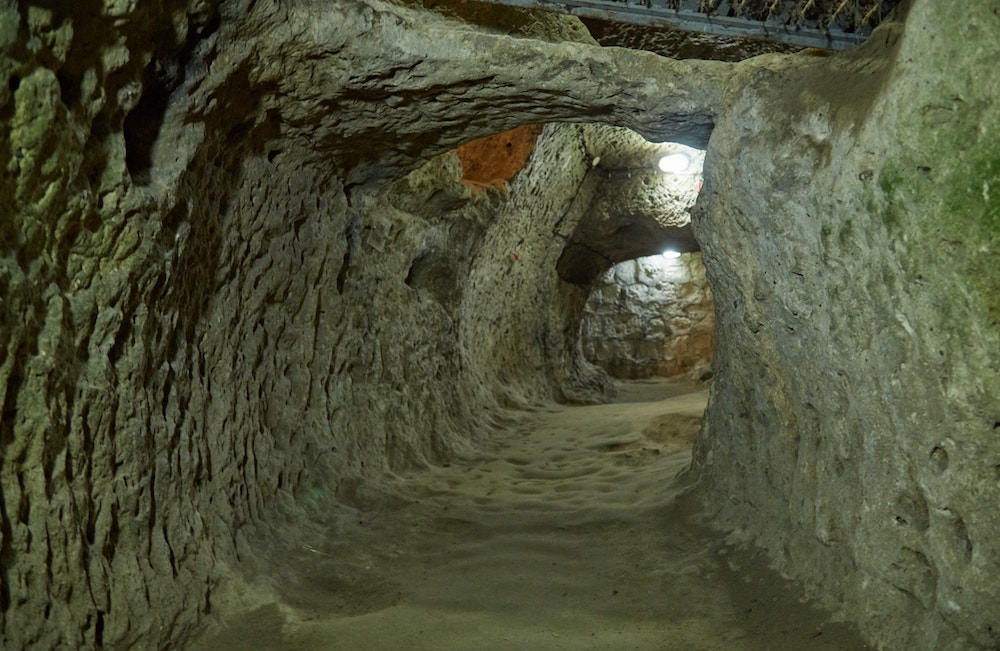
One of the most remarkable aspects of Derinkuyu is its simple yet highly effective security system.
Considering that this was all built to keep people safe, it would've all been for nothing without a way to keep out unwanted guests.
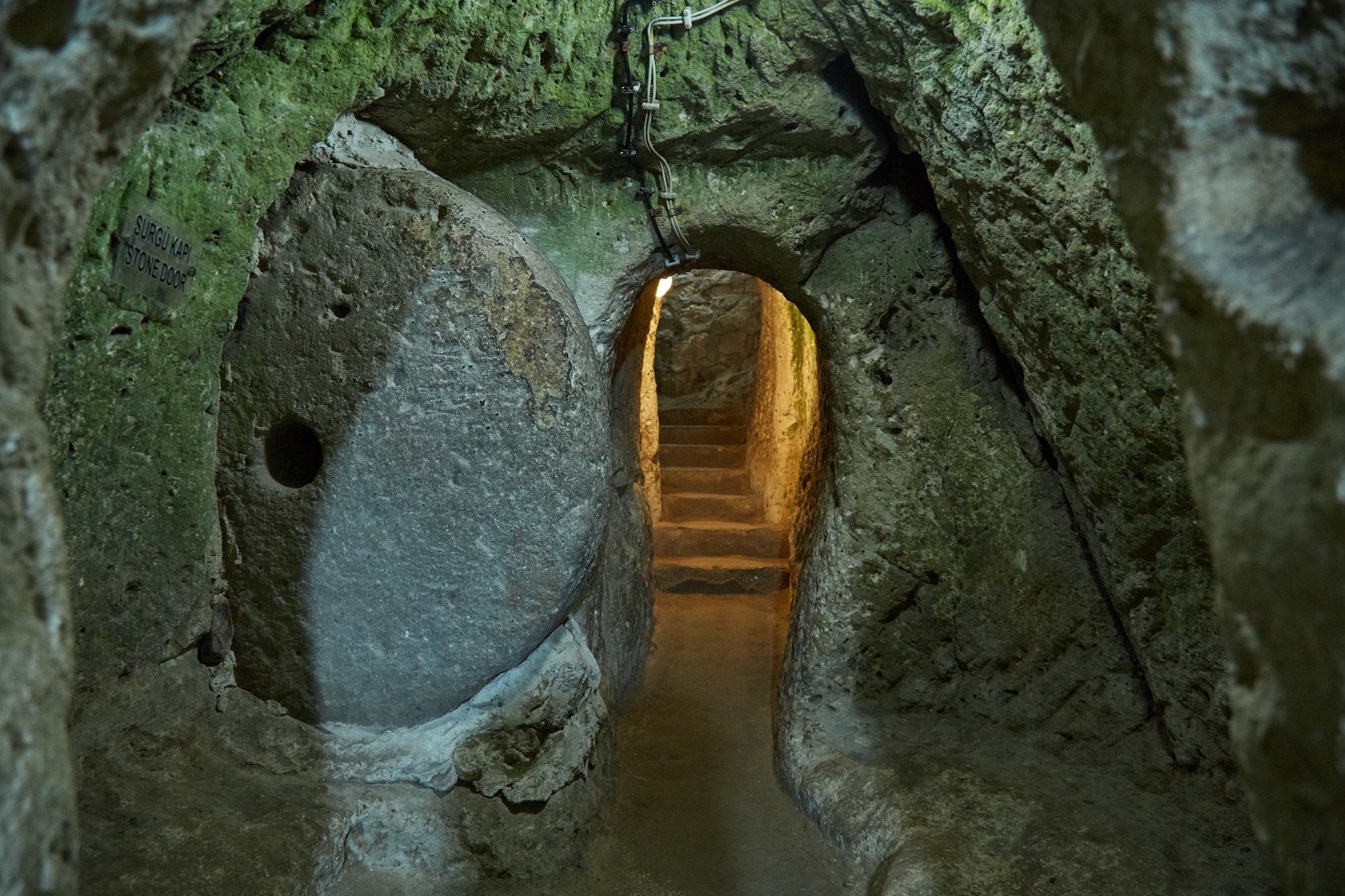
All throughout Derinkuyu (and also Kaymaklı), you'll spot huge circular monoliths with holes in their centers. When necessary, inhabitants could completely block movement by rolling one of them in front of an entrance.
And the hole allowed them to check if the coast was clear. Some of these stone doors are absolutely massive, and opening and closing them must've been a group effort.
Aside from security, another essential feature of Derinkuyu Underground City was its ventilation shafts. These would've had to been dug out first, with the rest of the sprawling town carved around them.
There are numerous shafts here, some of which are 70-80 meters deep. They also doubled as wells, as the builders would keep digging until they struck water.
In more stable times, the wells would also come in handy for the community above the surface. In fact, many modern inhabitants of Derinkuyu rely on these ancient wells to this day.
But some of Derinkuyu's wells were inaccessible from above, remaining reserved for the underground residents only. This was to prevent enemies from intentionally poisoning the water.
Moreover, the ventilation shafts also came in handy for quickly transporting goods between levels.
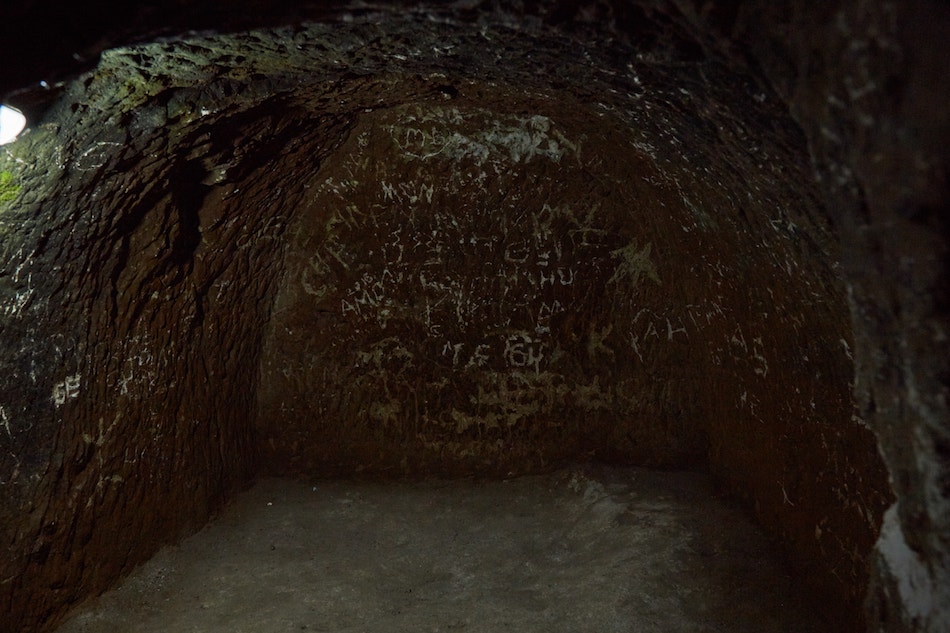
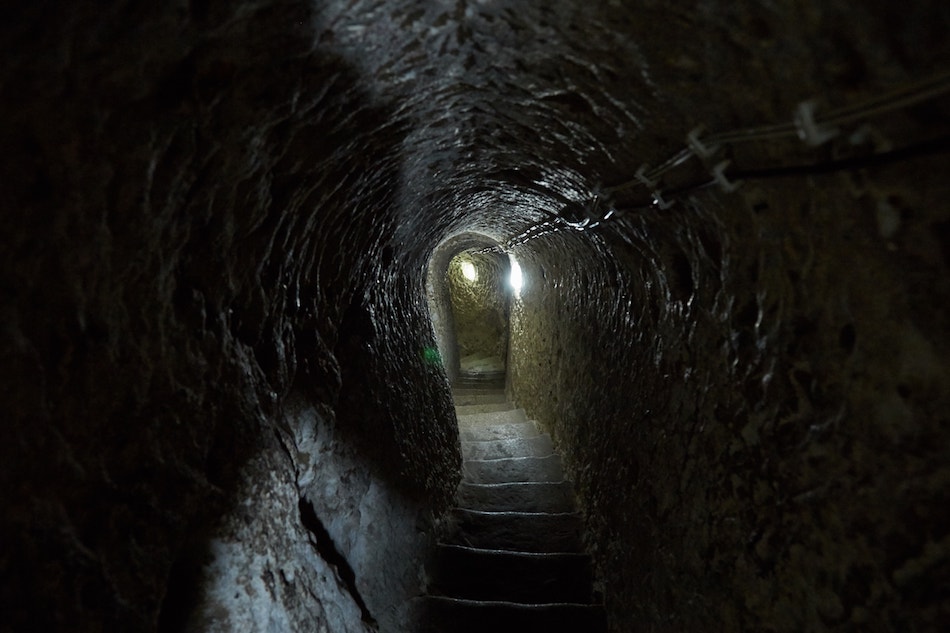

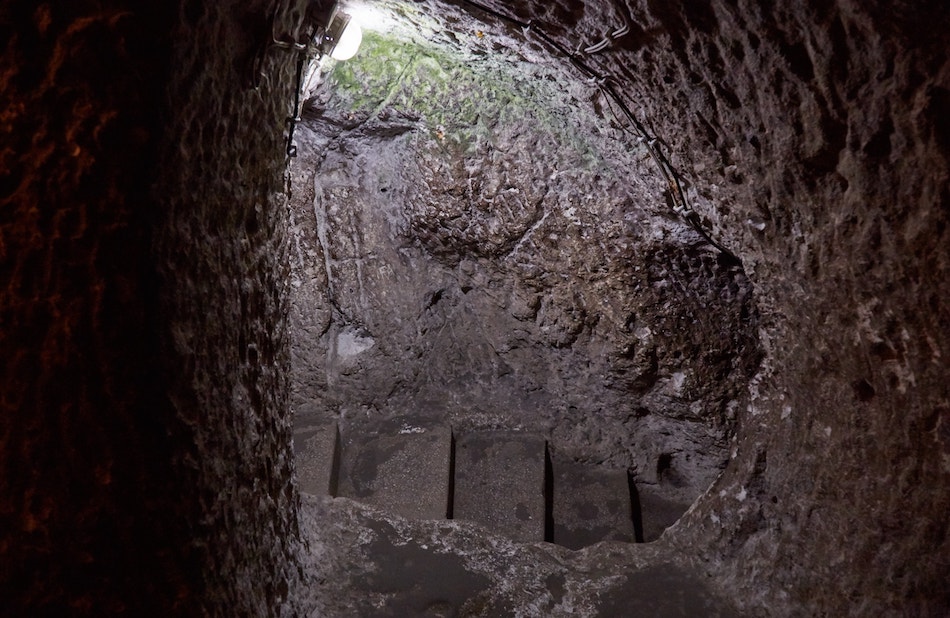
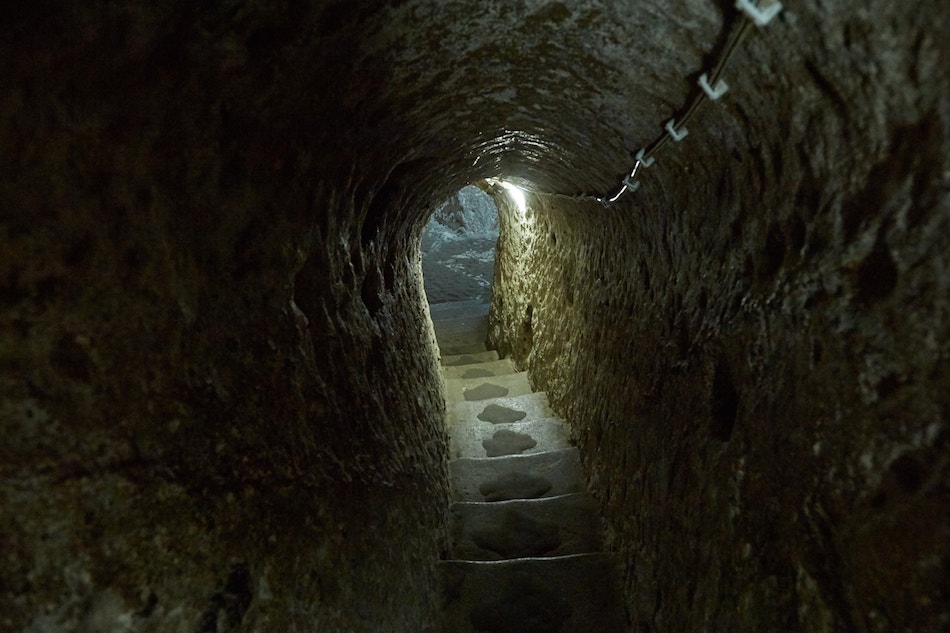
As time went on and Derinkuyu's subterranean population expanded, the underground city needed to grow. And this meant digging ever downward.
The lower and more recent levels of Derinkuyu housed things like meeting halls, various storage rooms and even graves. And this is also where the local community came to pray.
As a tourist, the lowest accessible level is that of Derinkuyu's main church. But there may be as many as ten additional stories even deeper below.
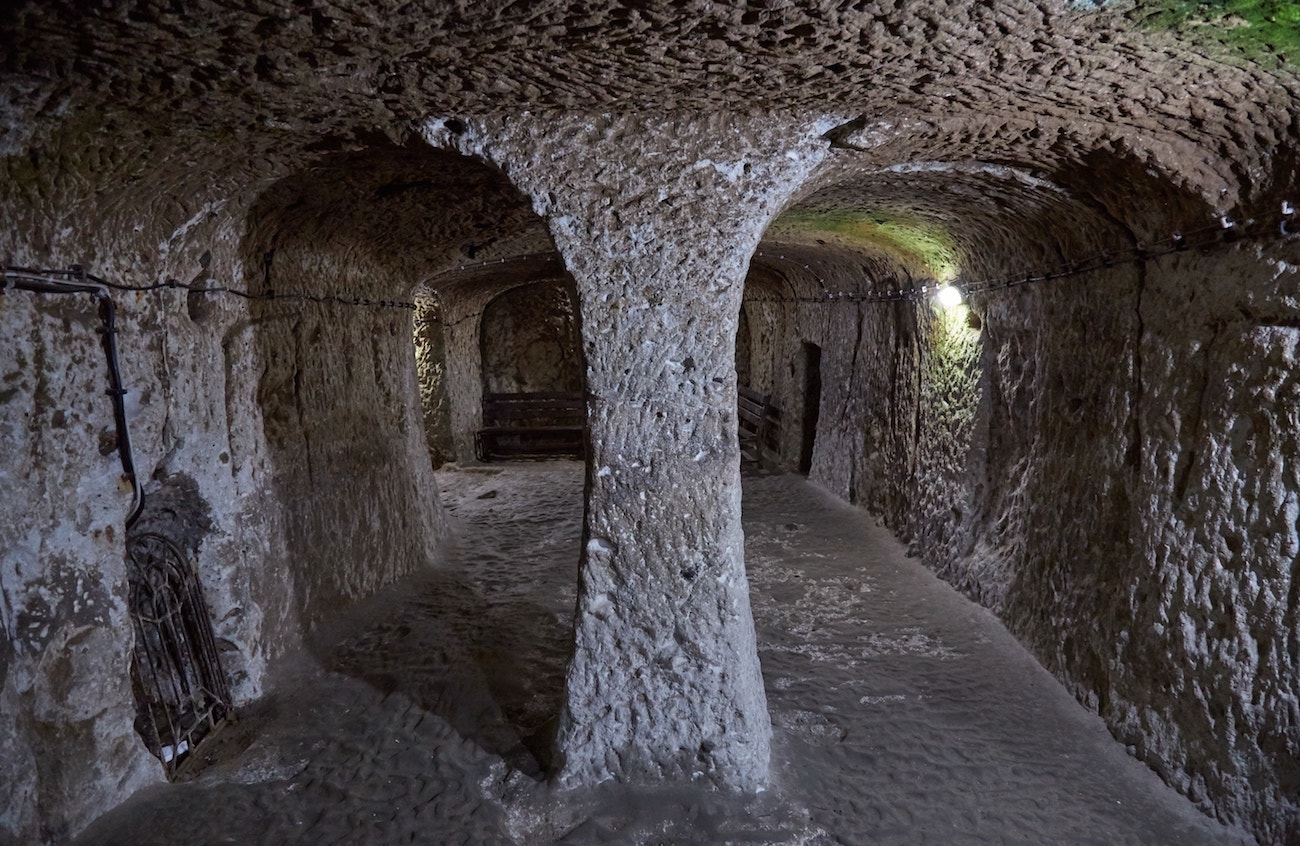
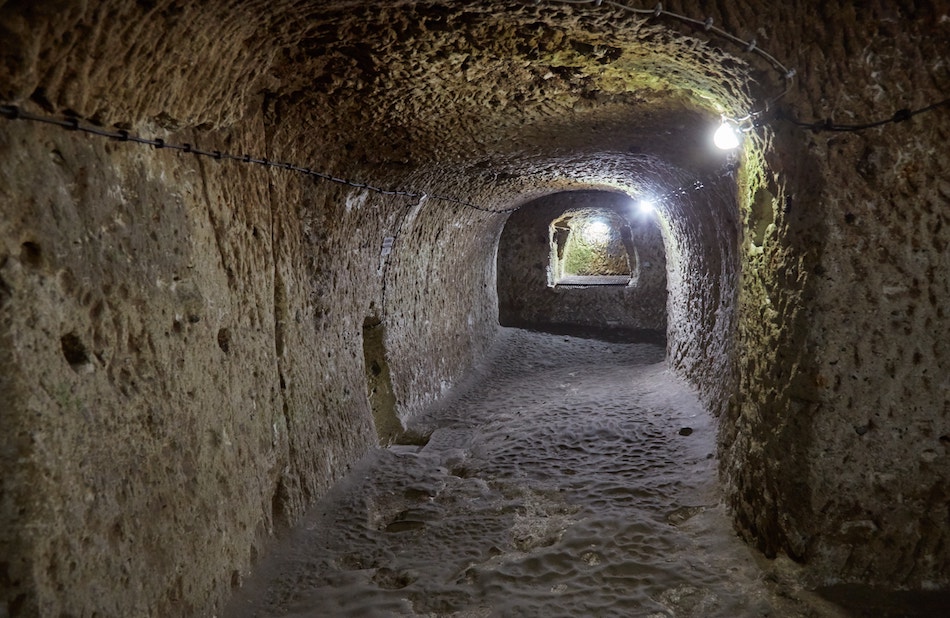
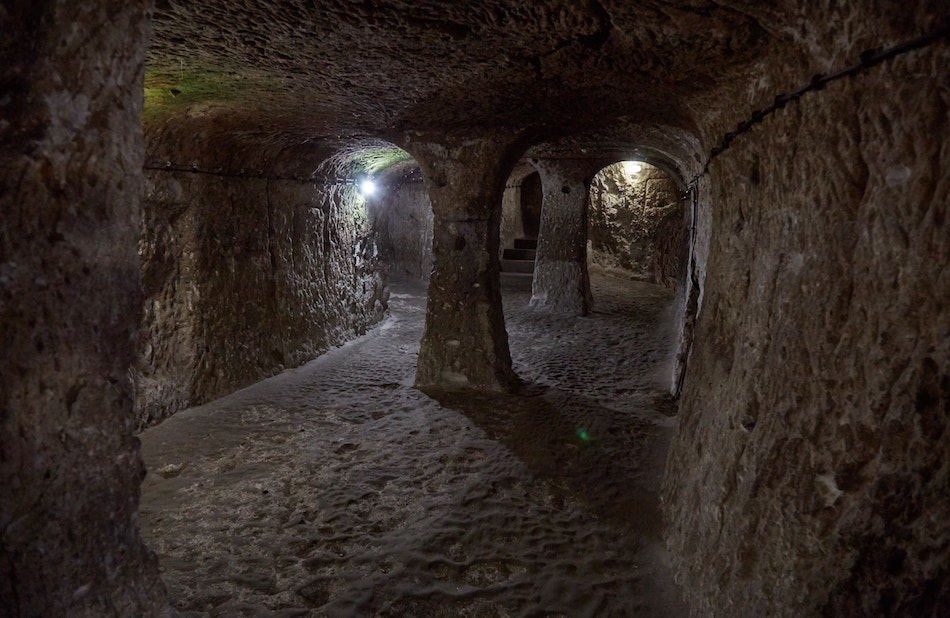
The church could likely fit a congregation of a few dozen people, while various niches were carved out for altars. Looking closely, you'll also spot numerous small niches along the walls for holding candles.
Those with claustrophobic tendencies may be relieved to learn that Derinkuyu's deepest level is also its widest. But seeing this church gave me an even deeper appreciation for Levon's Divine Underground in neighboring Armenia – all carved by one man!
You'll also find one of the city's main wells down here, along with a narrow passageway leading to the former graveyard.
When finished with the church, it's time to start your return ascent. But don't feel let down, as you've only seen half of all there is. The alternate path back up will take you through an entirely different set of rooms.
Along the way, you'll encounter more stone doors, narrow staircases, and various other rooms of an unknown purpose.
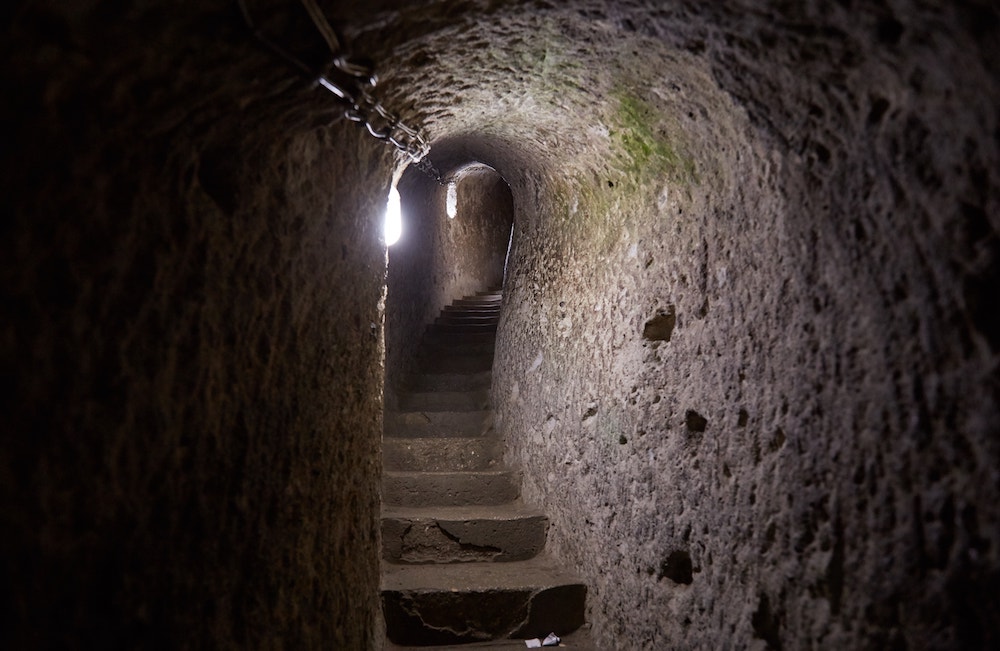
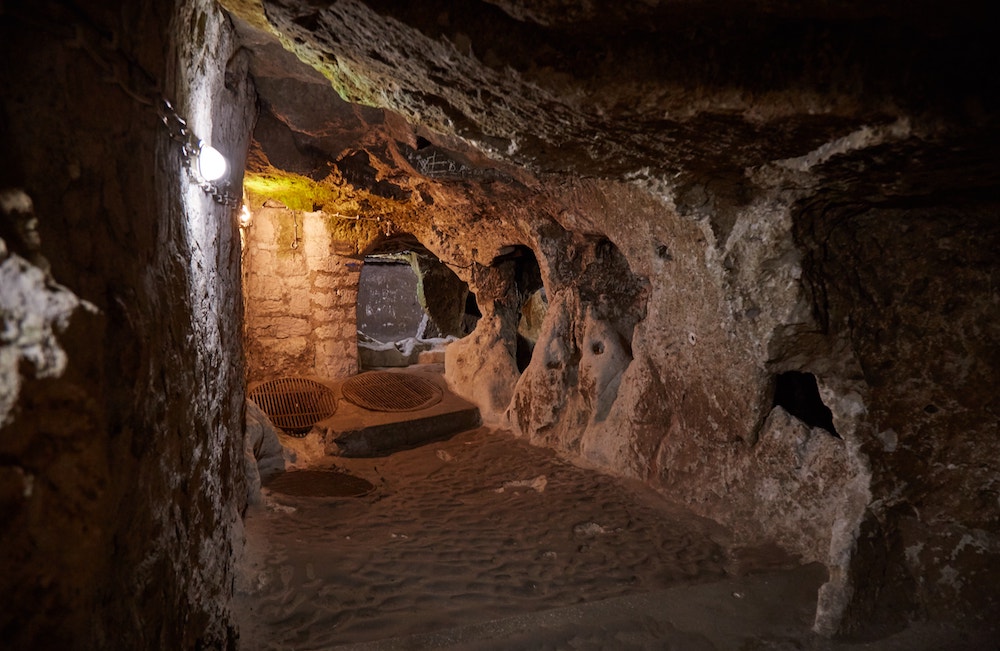

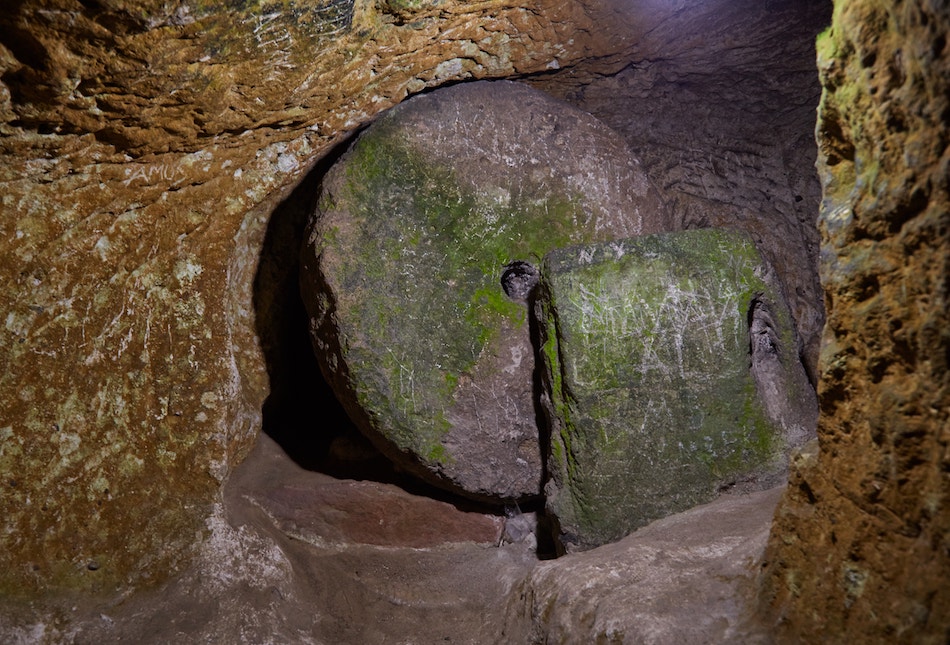
Fascinatingly, these caves were used as refuges as recently as the early 20th century. Before the formation of the Republic of Turkey, Anatolia remained home to a huge Christian Greek population.
And the Cappadocian Greeks took after their ancestors by hiding here to escape violent conflict. (A Greek Orthodox Church, in fact, can be seen just near the entrance. It remains locked and abandoned.)
With that in mind, Derinkuyu was only 'lost' for about 40 years. Its existence was presumably a tightly guarded secret within the Christian community.
And following the expulsion of all Greek Christians from Turkey in a 'population exchange,' the remaining Muslim villagers had no idea about Derinkuyu until finding it by accident.
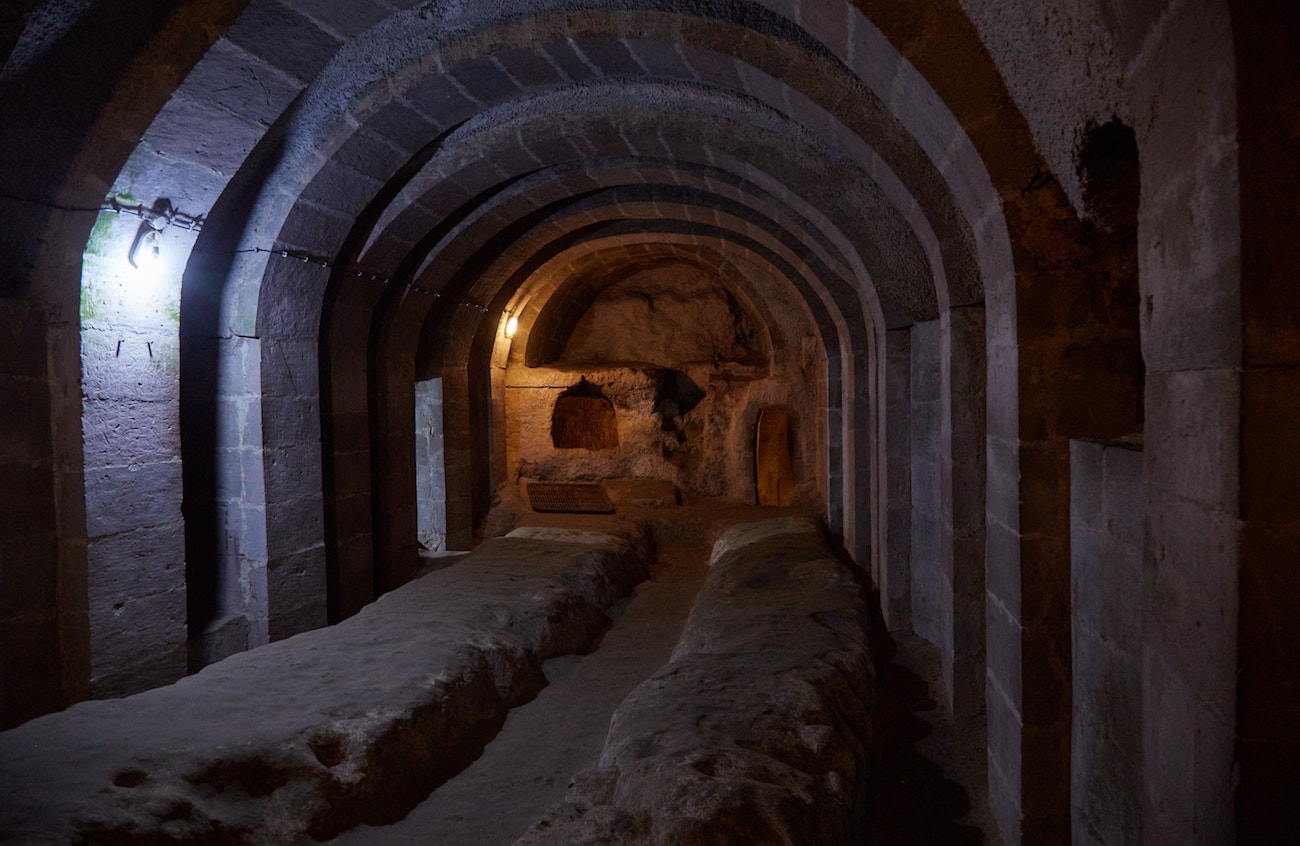
Back near the top, one of the most remarkable rooms is what's believed to have been a religious school. It stands out from all the others due to its impressive barrel-vaulted ceiling lined with masonry.
In addition to two long benches (or perhaps tables), the back of the room also features what's likely a baptism basin.
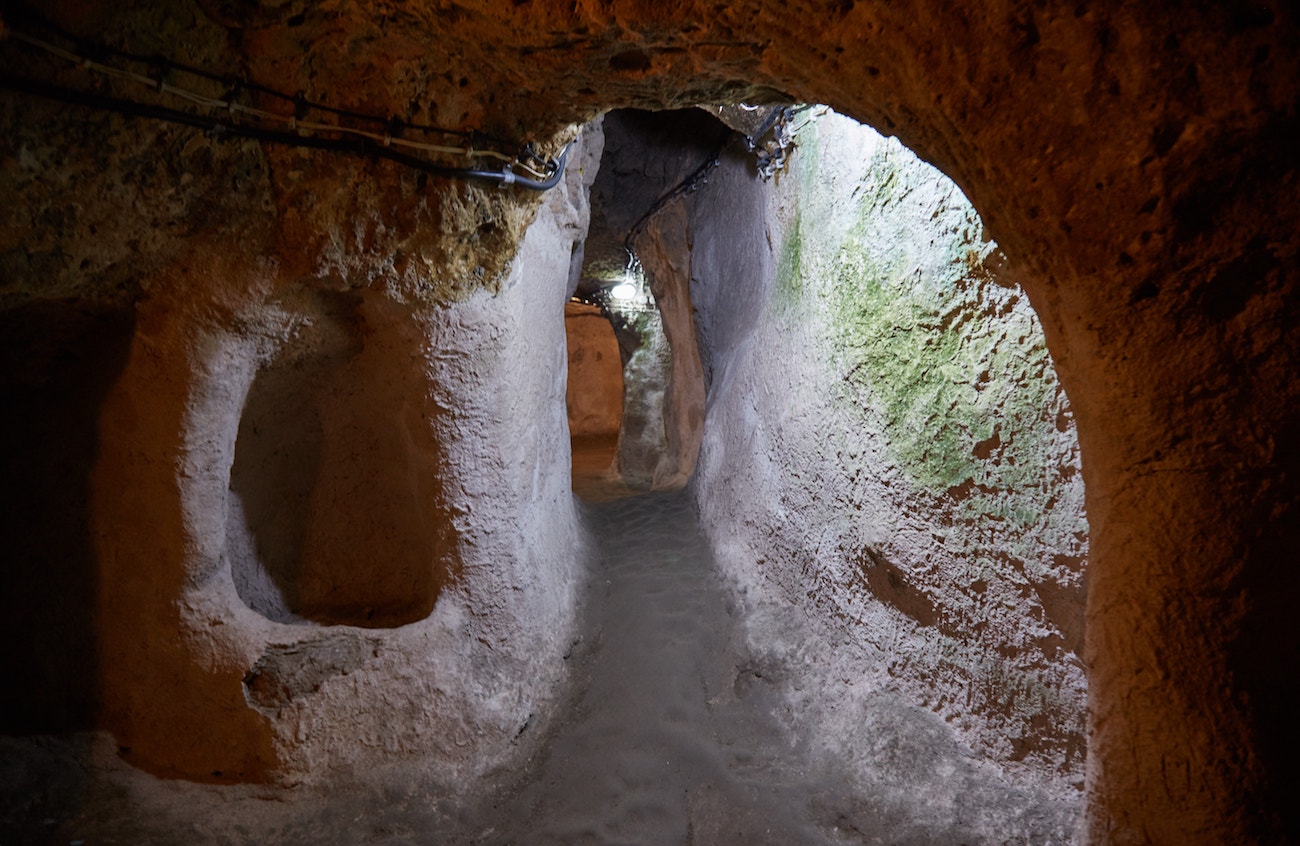
When exploring Derinkuyu, it's natural to picture the ancient city more or less how we see it now. But centuries ago, the rooms would've likely been adorned with decorations and decent furniture, with the entire place illumined by oil lamps.
Perhaps someday they can remodel some of the rooms after how they might've once looked.
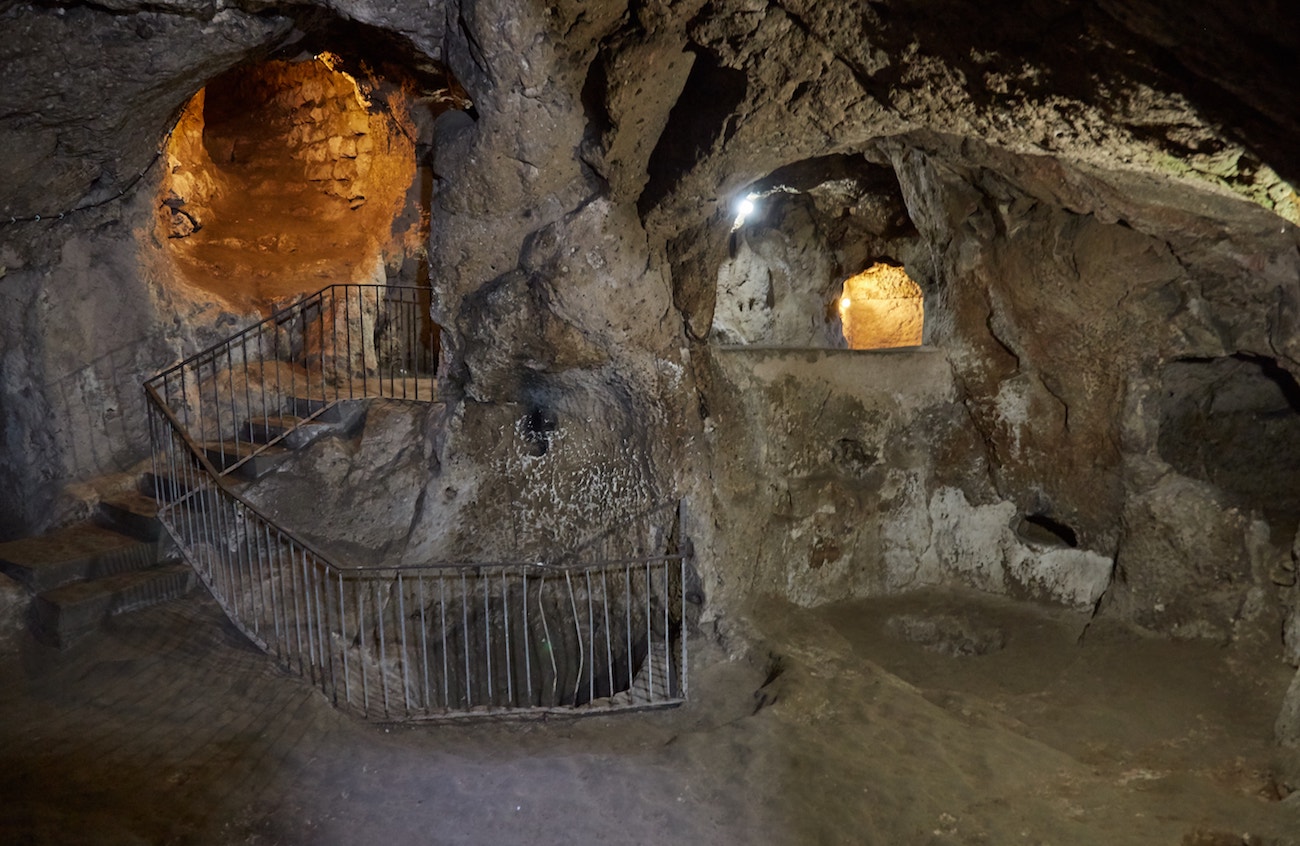
Before long, I spotted the sign for the exit. And stepping outside, the brilliant sunlight felt oddly foreign.
Back out in the modern world, I gave my eyes some time to adjust before I briefly checked out the abandoned Greek church. I then headed to the nearby bus terminal, as my underground explorations were only half-finished.
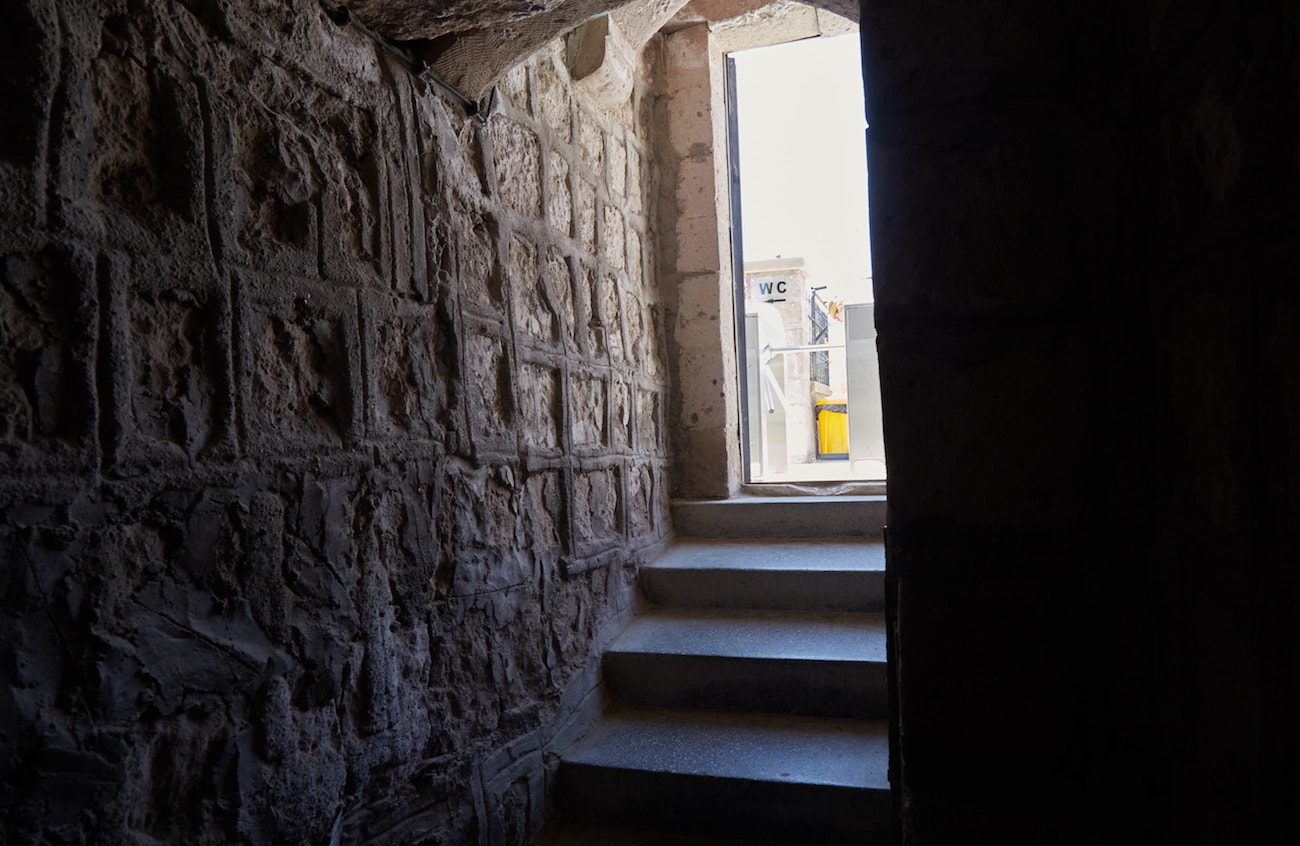
Kaymaklı Underground City
Taking the bus back in the direction of Nevşehir, I got off near the entrance to Kaymaklı Underground City, around 9 km to the north. Kaymaklı shares a similar history to that of Derinkuyu, having been inhabited by the Hittites, the Phrygians, and then various Christian communities.
In fact, the two cities were connected via a long underground tunnel! Considering how there were hundreds of similar settlements nearby, it's fascinating to consider the idea of a complex trading network taking place completely underground.
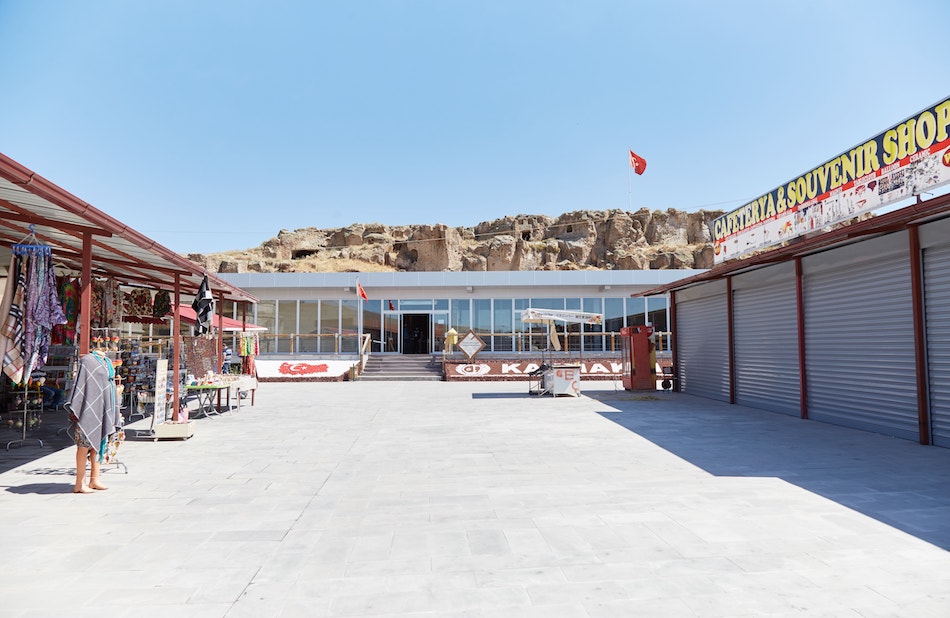
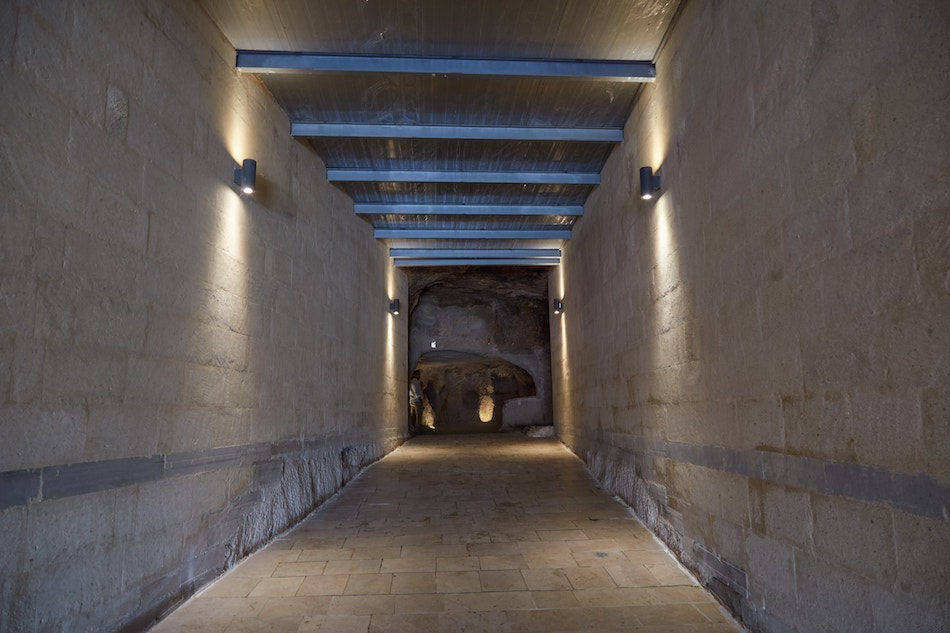
Kaymaklı Underground City was discovered in 1964, just one year after Derinkuyu. And like its slightly bigger brother, it has countless entrances – most of which are located on residents' private property.
The official entrance area is now lined with souvenir shops. And after entering the modern glass building and buying your ticket, you'll suddenly find yourself walking into a dark and rough cave.
You'll then encounter one of the original stables. Note the holes in the rock that were used to tie up the animals.
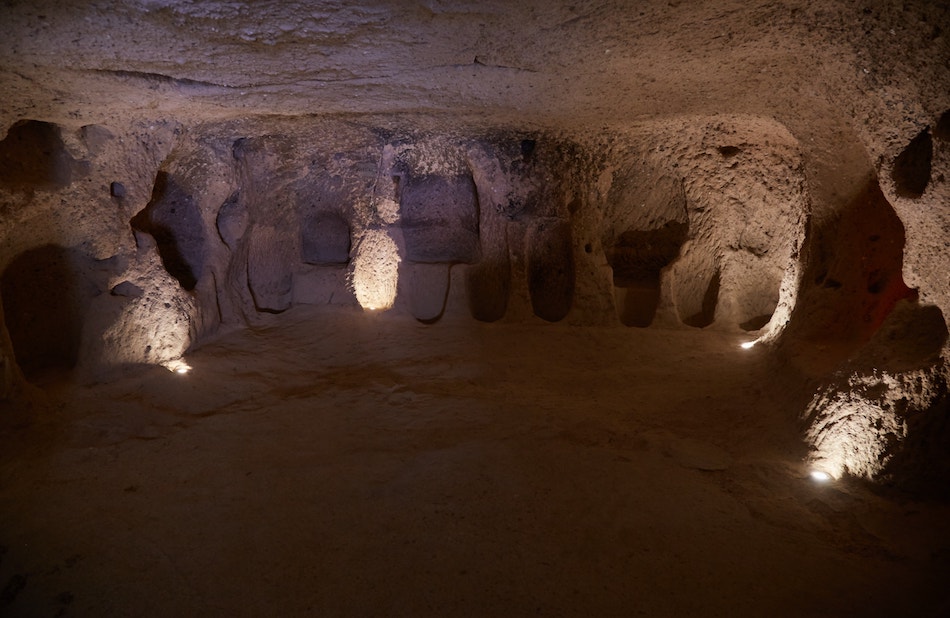
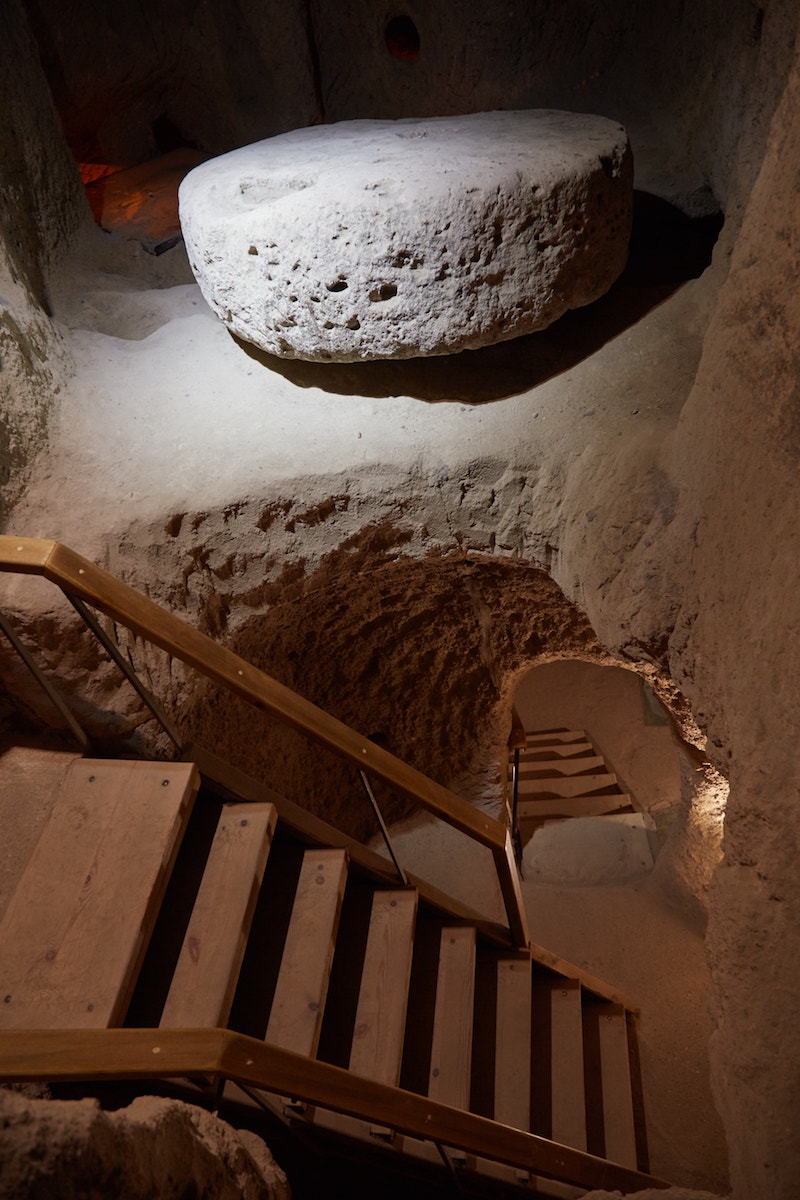
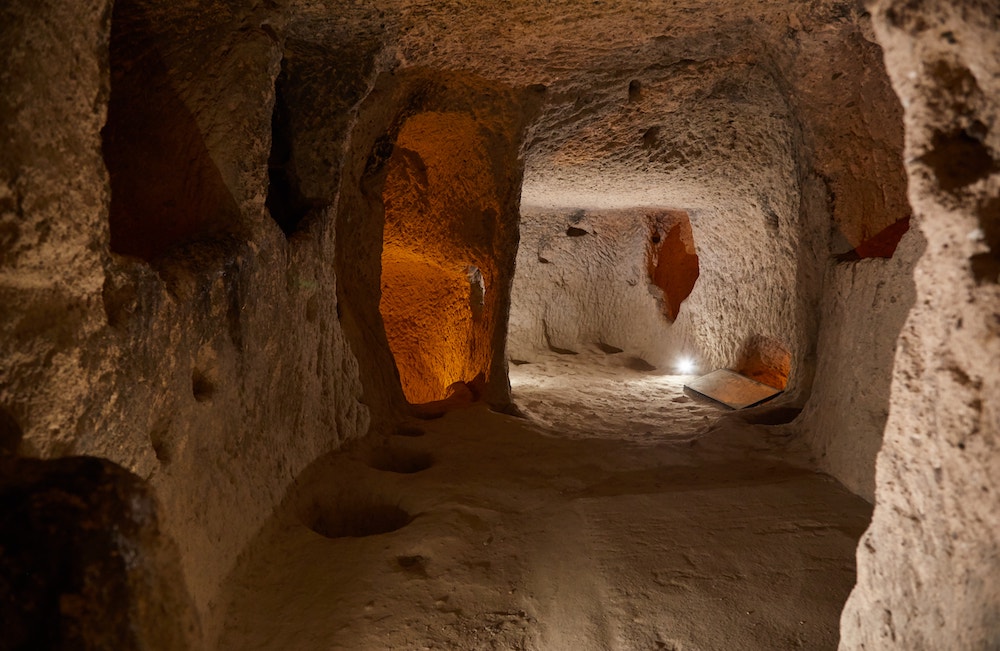
In comparison to Derinkuyu's eight accessible stories, visitors to Kaymaklı can only access five. There are said to be several additional lower layers, however.
While not as deep as Derinkuyu, each level of Kaymaklı Underground City is a lot more expansive. Kaymaklı is also much better lit than Derinkuyu, making it the more photogenic of the two.
As at Derinkuyu, there are many former storage rooms near the top. And aside from food, one of the main goods kept here was grapes.
The climate and humidity of Cappadocia's underground cities turned out to be perfect for fermenting grapes and storing wine. The techniques were mastered over the course of centuries, and Cappadocian wine remains famous to this day.
As you'll encounter shortly, Kaymaklı Underground City was also home to multiple wine presses.
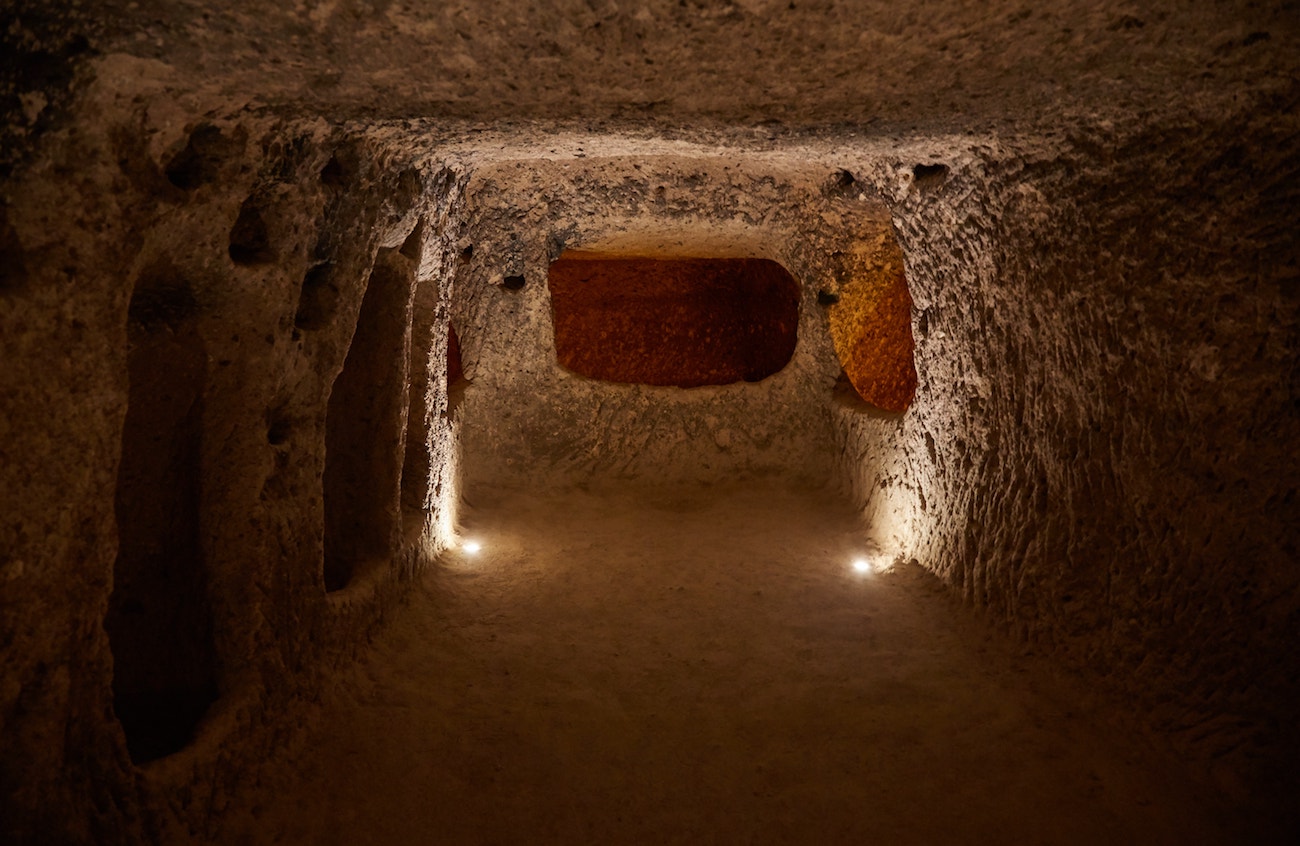
Moving along, you'll also encounter a church with a single nave and two apses. Elsewhere on the second floor, meanwhile, are the remains of some graves, in addition to some habitations.
The former residents of Kaymaklı seemingly had no choice but to bury their dead right near where they slept!
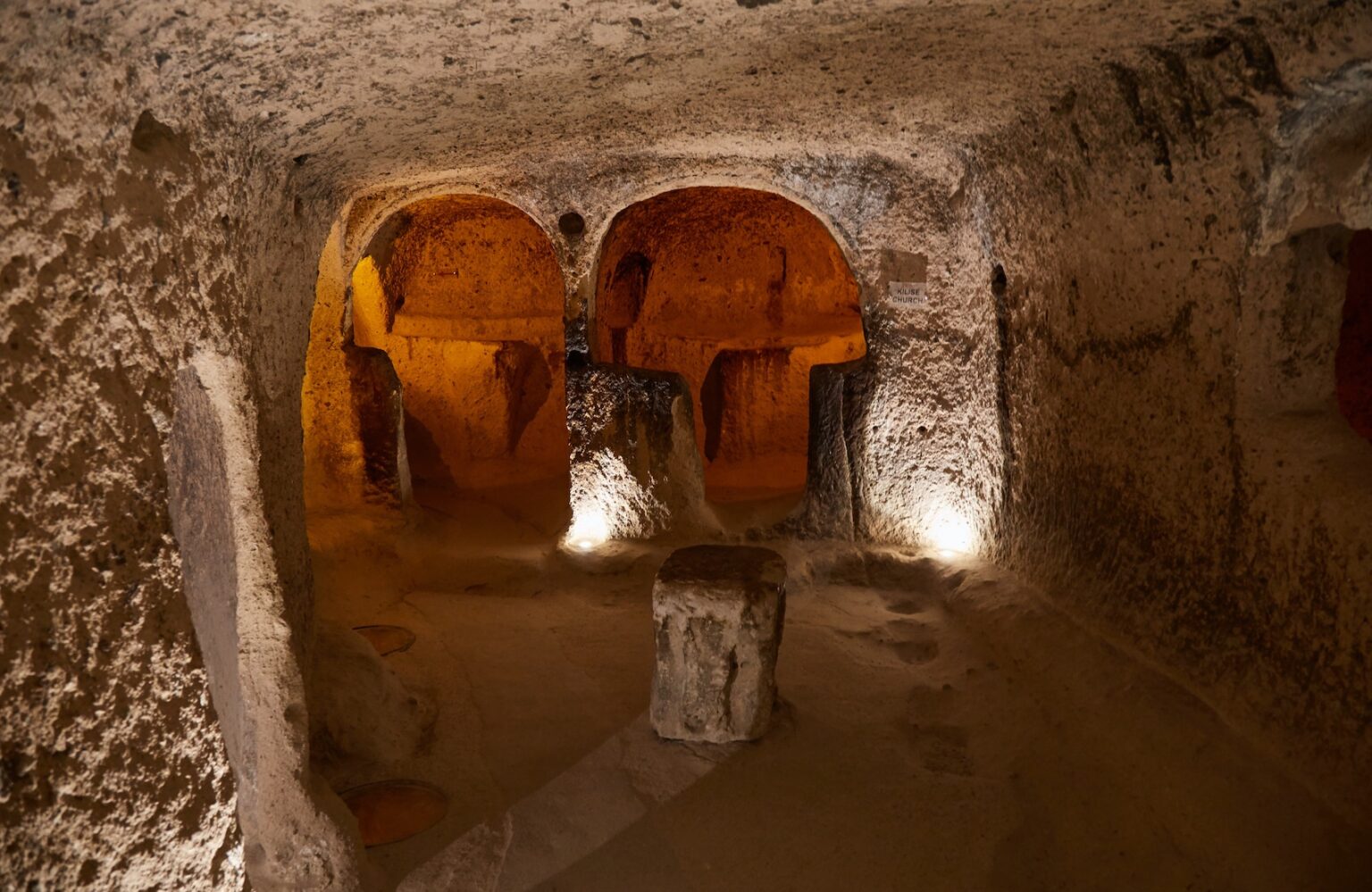
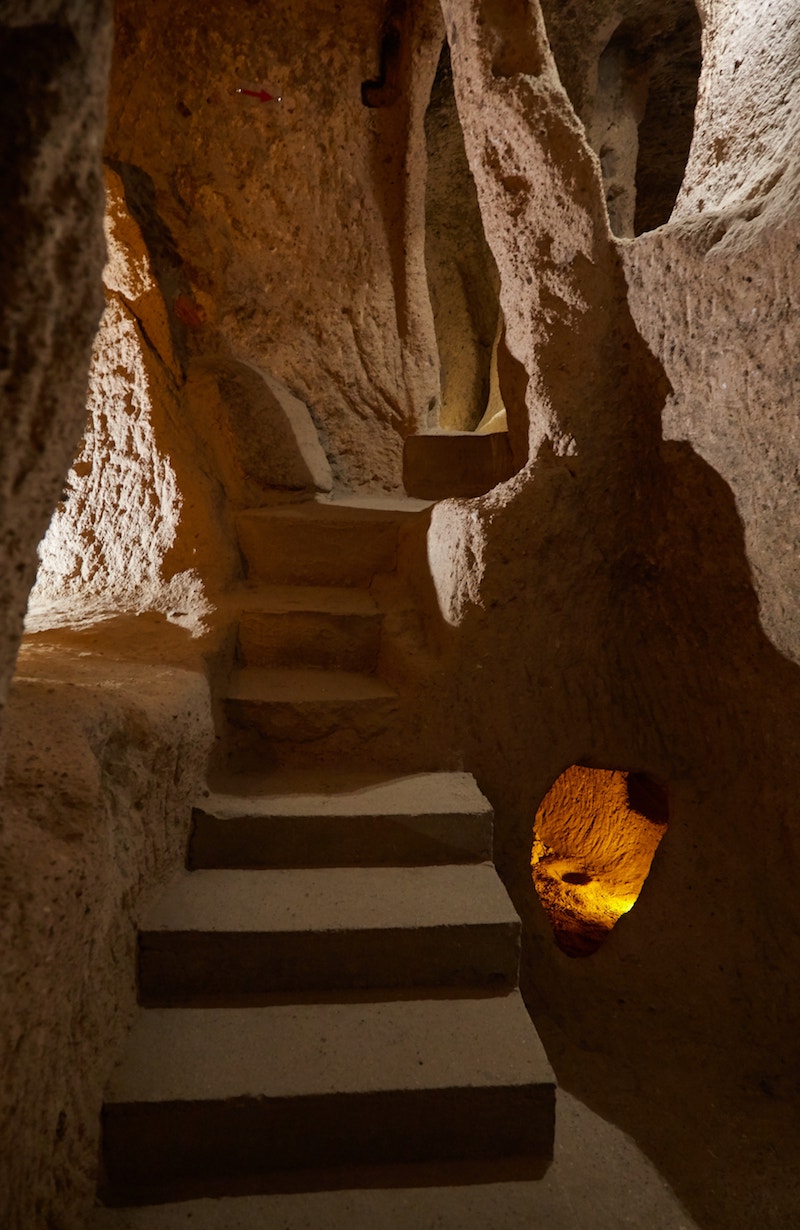

As at Derinkuyu, the floors of the Kaymaklı were separated by the same type of round stones. Interestingly, some of the ones here appear to be even larger.
Moving deeper underground, the third level is home to additional storage rooms along with a winery and kitchen. Given space constraints, cooking and eating in the underground cities were likely communal affairs.
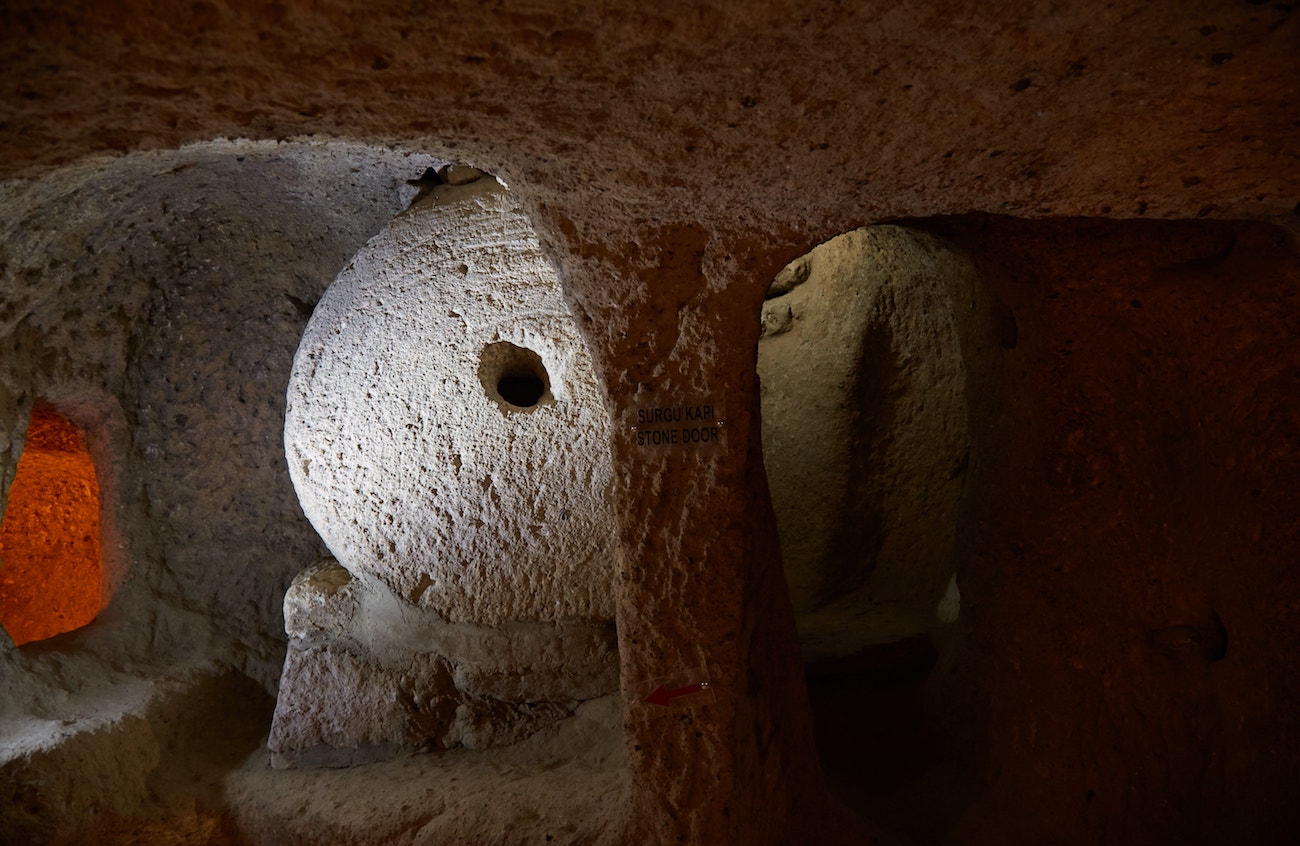
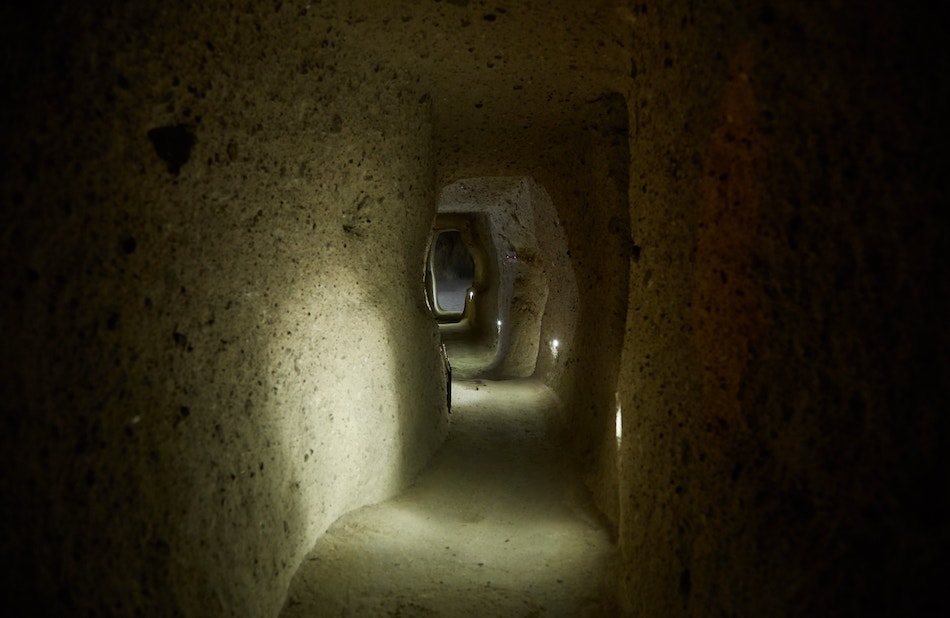
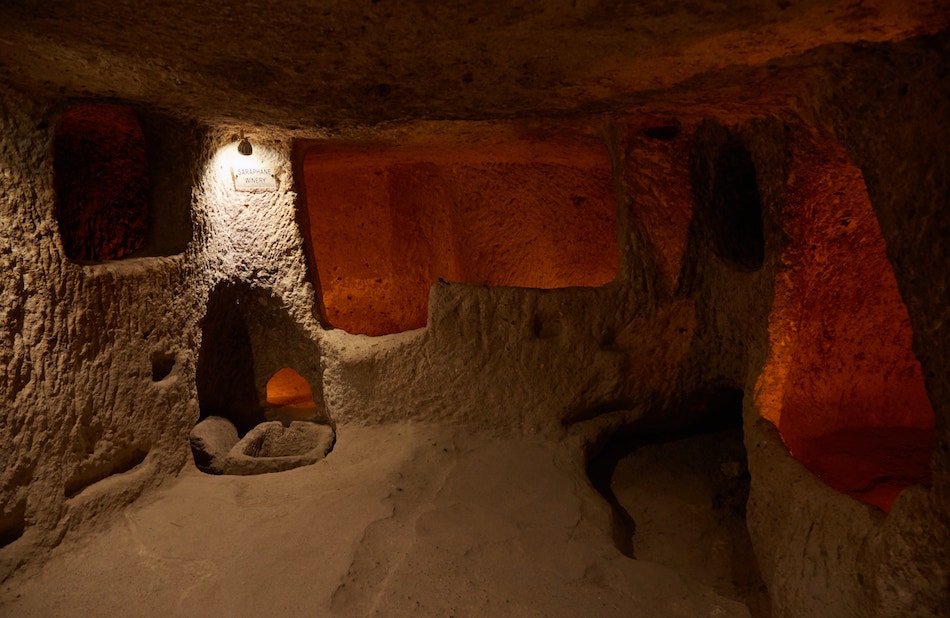
Moving along, you'll encounter one of the highly crucial ventilation shafts, in addition to an elaborate living room.
With fewer floors and wider spaces, Kaymaklı Underground City is perhaps better suited for those with claustrophobic tendencies. But it's arguably the more disorienting of the two.
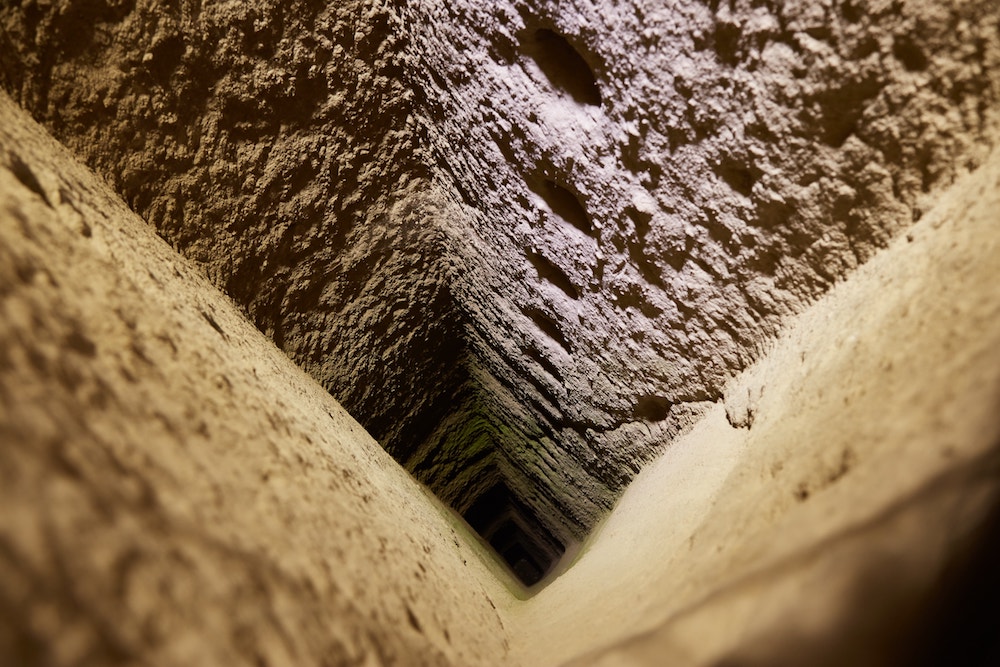
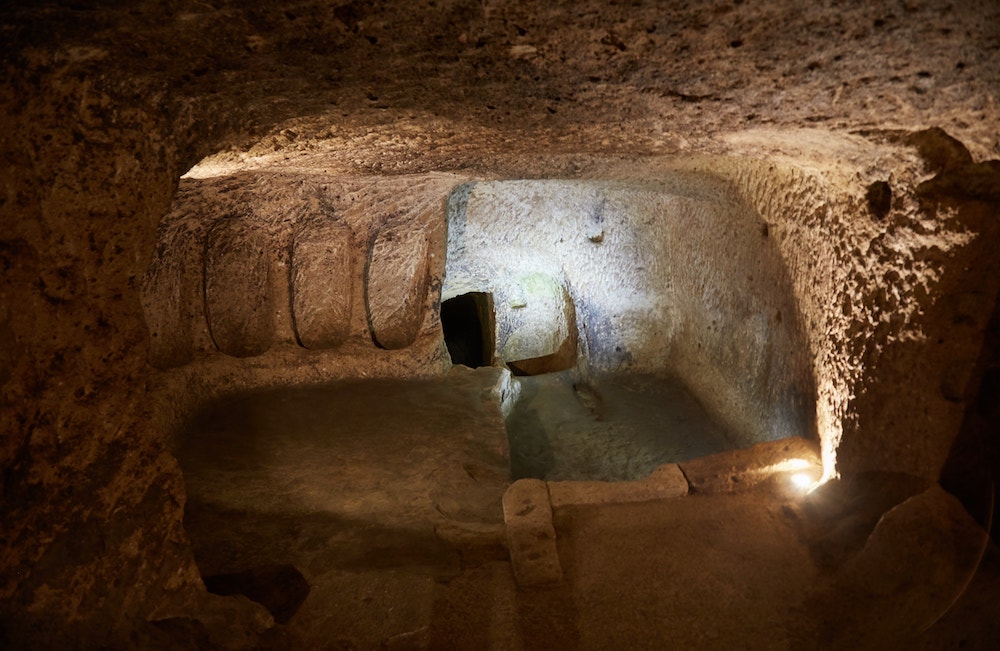
With so many different rooms on each level, it can be difficult to remember what you did or didn't see. Typically, each floor has a large room in the middle which acts as the central hub.
But a single hub might have 4 or 5 different tunnels emerging from it, and you must pay close attention if you don't want to miss anything.
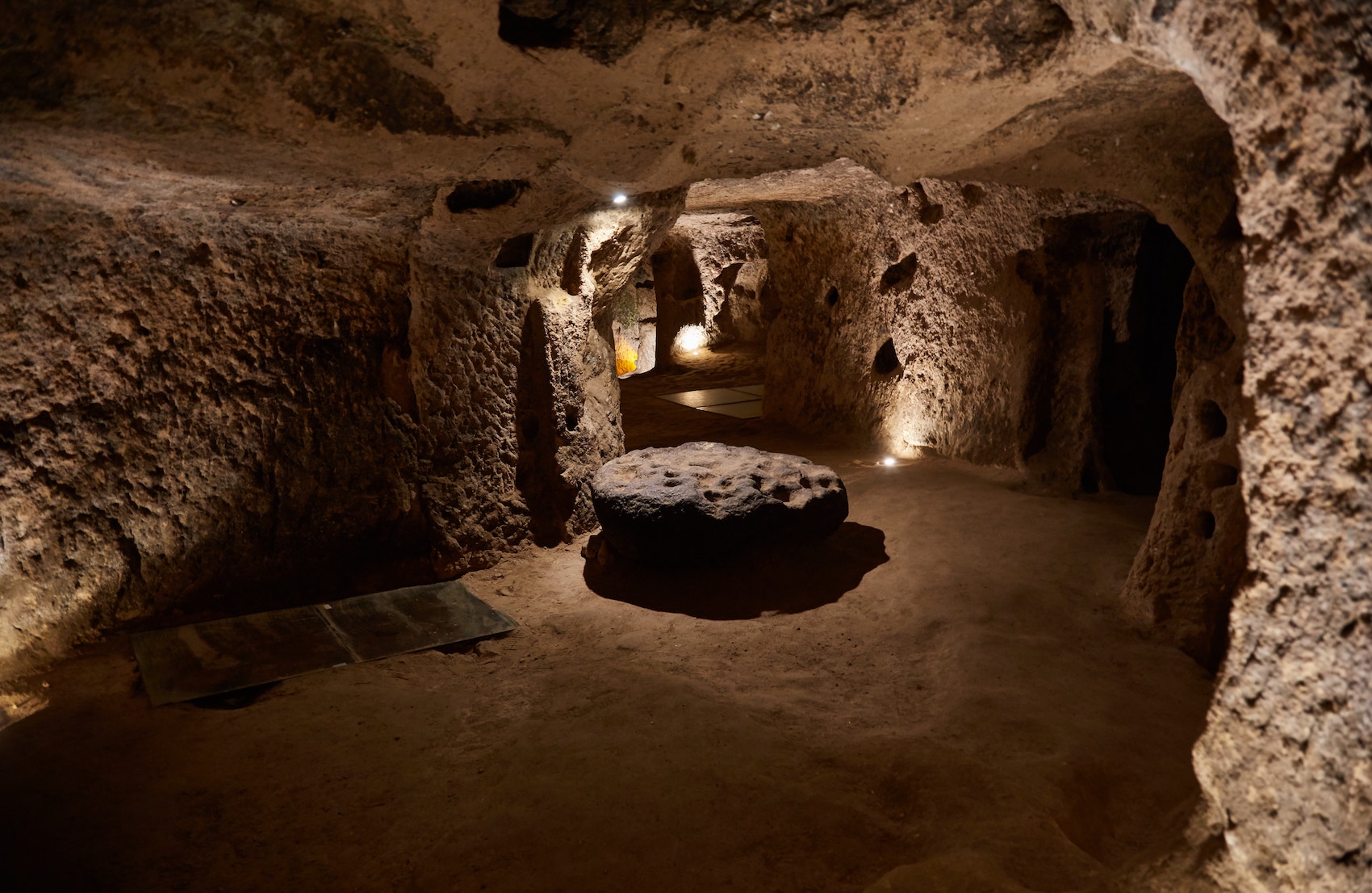
One of the more interesting objects you'll encounter at Kaymaklı is a large round stone with numerous cup marks on its top. Unlike the tufa surrounding it, it's a hard volcanic stone called andesite. And experts believe it was used for making copper.
Moving even deeper underground, you'll find additional storage rooms. While now missing, many of these rooms would've once been entirely filled with earthenware jars.
The sheer number of storage rooms supports the idea that the community here was quite well-off.

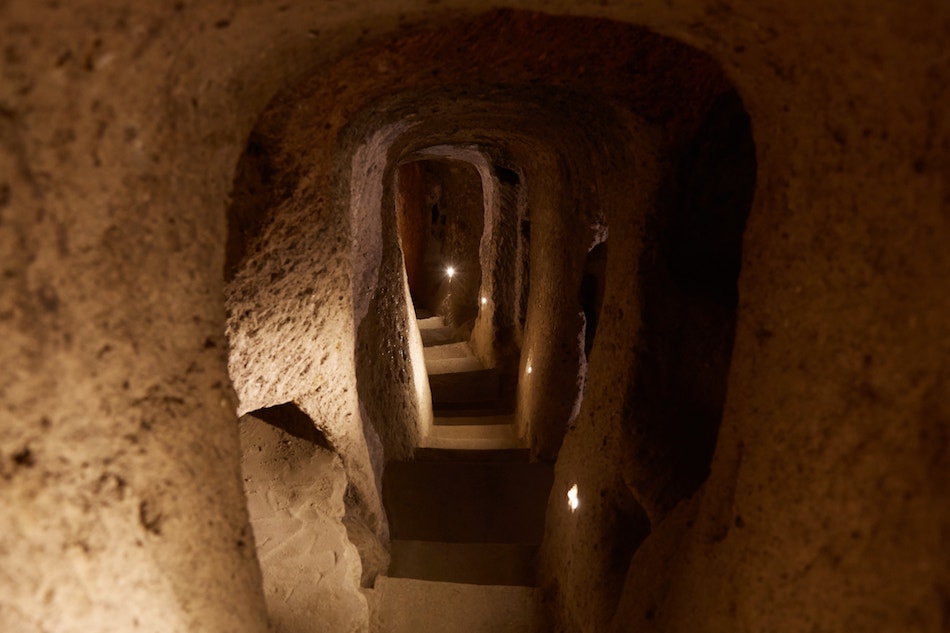
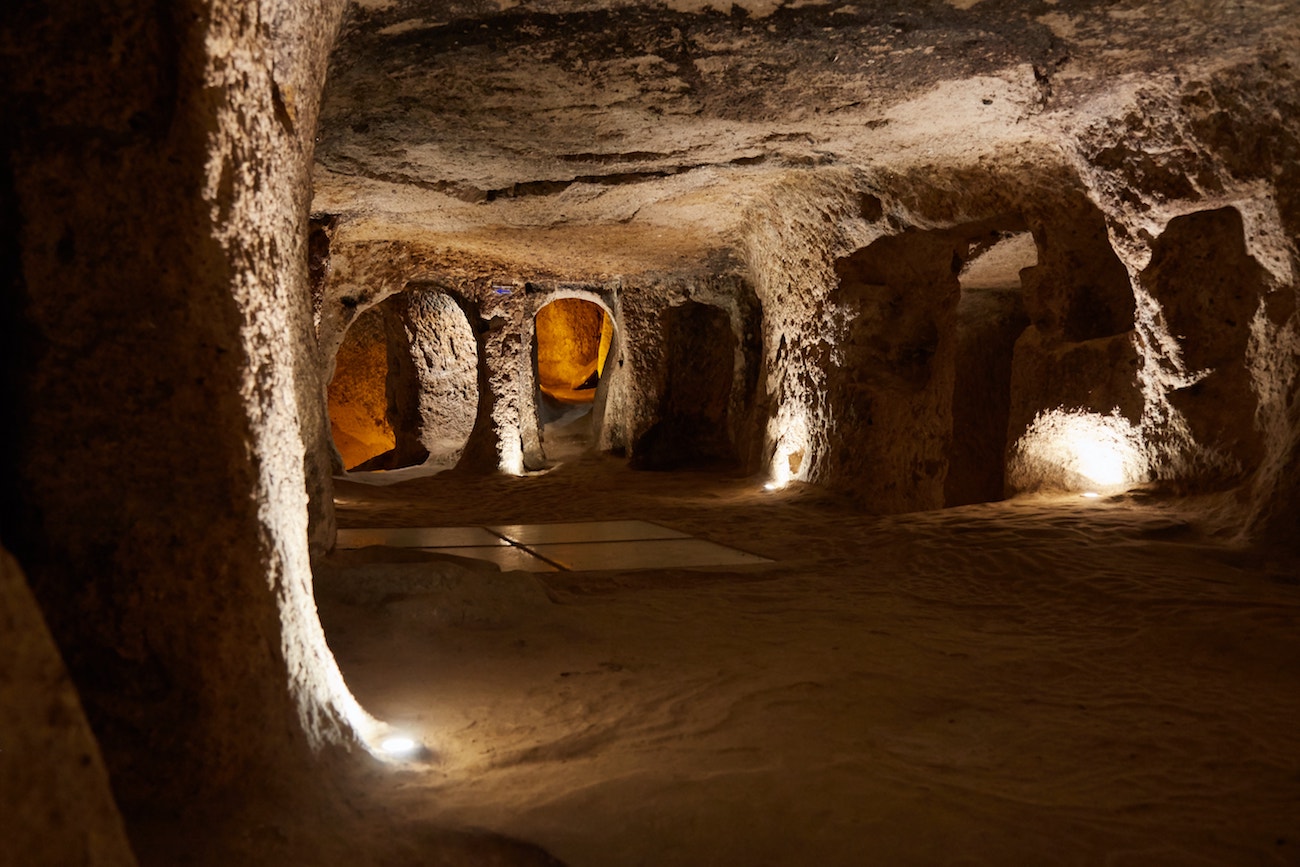
One of the most puzzling things about these underground cities is the question of where all the tufa was disposed of. Presumably, the settlements would've been continually expanding as people were living and hiding in them.
So how could builders get rid of the rock without taking huge amounts up to the surface? Perhaps it was disposed of via a network of underground streams.
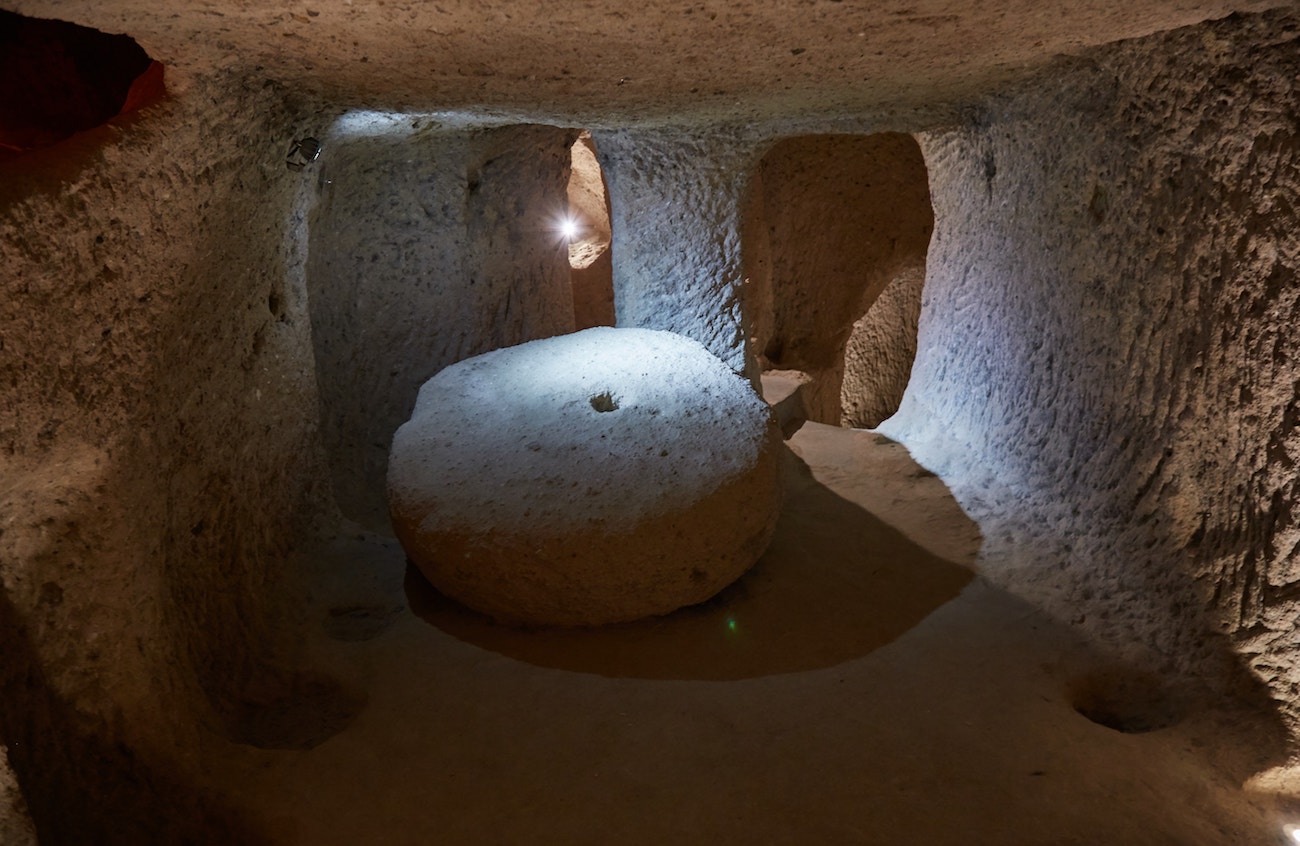
Finally back at the entrance, I wasn't quite sure how much time had passed. And I had a lot of questions running through my mind.
It's hard to imagine living without natural sunlight for months at a time. And while the underground inhabitants clearly had everything they needed, wouldn't simply fleeing to a different region have been preferable? Perhaps we're still missing some significant historical details.
As more underground cities are discovered and we get a better sense of the subterranean network's true extent, additional facts will surely come to light in time.
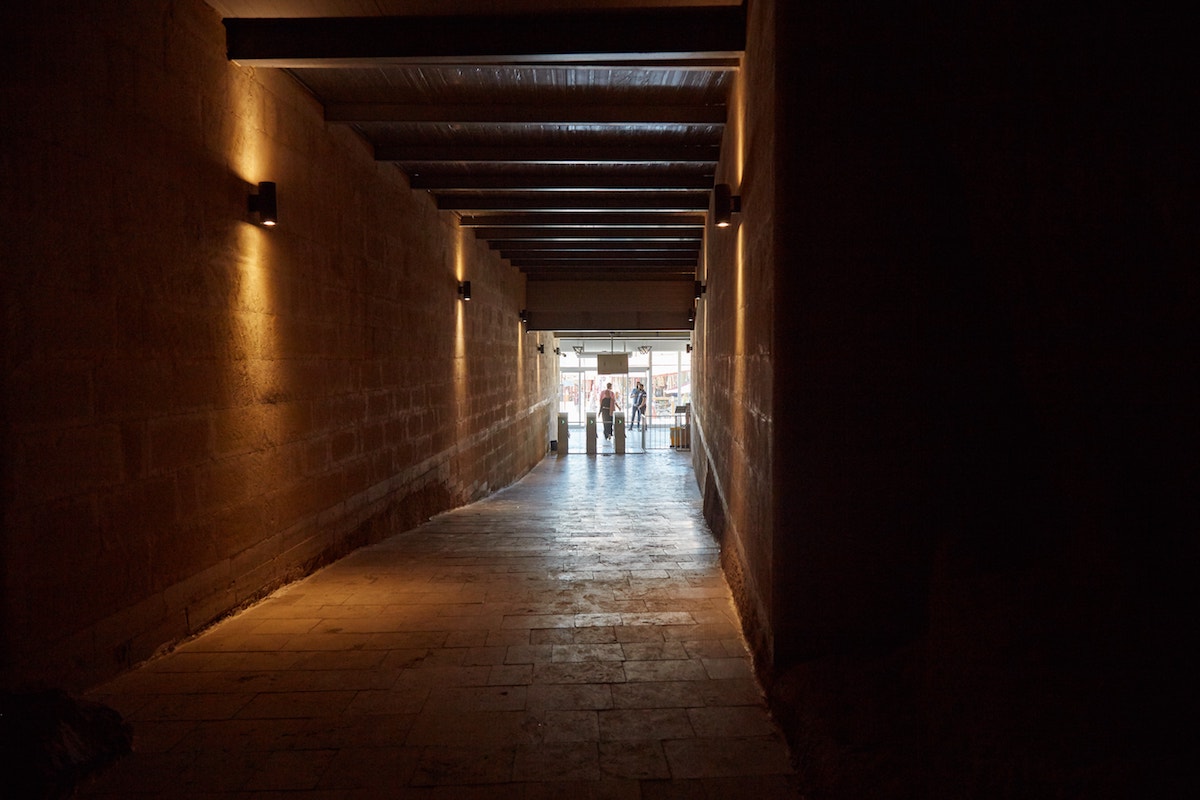
Source: https://sailingstonetravel.com/derinkuyu-kaymakli-underground-city/
0 Response to "Easy Way to Clear Rooms Underground in Egnimatic 2 Expert"
Post a Comment